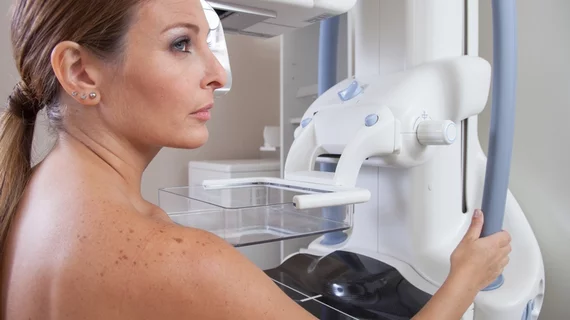More than 75% of hospitals and imaging centers have resumed regular mammography screenings—a service line hit particularly hard by the pandemic—according to a new analysis released Tuesday.
Roughly 5% of such providers are actually seeing patient volumes that are higher than pre-COVID levels, according to breast imaging data analytics firm Volpara Solutions. Many practices are adding extra evening and weekend hours to help radiologists work through the backlog.
A number of firms are within 10% of patient volumes recorded before the public health crisis, the New Zealand-based firm estimated using its database of more than 20 million mammographic images.
"During this unprecedented time, we know that nothing is as it used to be," Monica Saini, MD, chief medical officer, said in a statement. "Facilities that have seen limited scheduling and significant drops in patient volume must now prepare for higher-than-normal volumes to resolve backlog.”
Breast cancer screening and other outpatient imaging has been hit particularly hard by the pandemic. Hospital giant Northwell Health in New York City estimated that it has seen a roughly 94% year-over-year decrease in mammography, alongside an overall 88% dip on the outpatient radiology services side. Volpara pegged the total downturn in mammography volume at about 70%, according to its June 9 analysis.
Oregon Imaging Centers has witnessed such a drop in its visits over recent months but started to resume regular nonurgent imaging around early May. The firm has looked to provide a smooth transition for patients and used multiple forms of communication to get the message out to patients—letters, calls, social media. It’s also offering the option to check in for imaging appointments either through a kiosk or by waiting in their car, employee Robyn Cole said in a recent interview.
She said they started out operating at about 40% capacity to allow extra time for cleaning and space for social distancing.
“As we acquire further information and patient feedback, OIC’s management team will decide how quickly we will increase the capacity for screening mammography,” Cole said.
Catherine Hill, chief of mammography at Dr. Jones & Partners Medical Imaging in Australia, said they have also implemented new positioning procedures at her practice. For the cranial-caudal view, for instance, radiographers move away from a patient’s face, while for the mediolateral-oblique view, they ask customers to look away from the caregiver. Interviews are conducted at a safe distance, too, and imagers are working efficiently to minimize time spent close to subjects.
“The radiologists reduced the time they were in the rooms, didn't shake hands, and stood at the end of the bed,” Hill added in an interview posted on Monday. “On the whole, patients were happy with this arrangement and were just glad they could still get a mammogram during this time.”

